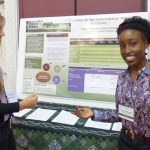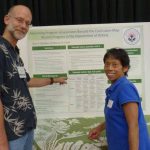Assessment: Informing Co-curricular Programming from Past to Present to Future
The Learning Assistance Center (LAC) offers academic support, e.g., tutoring and supplemental instruction (SI) study groups, for students …


The Learning Assistance Center (LAC) offers academic support, e.g., tutoring and supplemental instruction (SI) study groups, for students …

Access to College Excellence (ACE) at UHM provides a series of first year programs that serve approximately 25% …

The mission of the instruction program in FDM is to provide students with appropriate knowledge and skills for …

The Master of Early Childhood Education Program is a 2-1/2 year, 30 credit hybrid program is primarily delivered …

This poster describes the program’s project to develop doctoral level program learning outcomes mapped to required courses and …

The Intercollege Nutrition PhD Program is a relatively new program, begun in Fall 2007. The Program has recently …

Two departments have begun the process of merging undergraduate programs to address a number of challenges faced by …

The Public Administration Program offers a Master’s of Public Administration (MPA) degree. Currently our program is 30 credits, …

This poster exhibits the outcomes assessment practices of the BA in Second Language Studies program. While engaging in …

The M.Ed. program in Special Education is an interdisciplinary program that includes core courses and electives. The core …

Five faculty in Department of Microbiology run five programs (BS/BA Microbiology; BS Molecular Cell Biology (MCB); MS/PhD Microbiology). …

Mānoa Works is designed to increase the college retention and success of need-based students through part-time work experience …

In Fall 2014 and Spring 2015, I surveyed the reactions of N = 58 undergraduate students in three …

This poster highlights the work of University of Hawaii at Manoa 2013 Information Literacy Working Group. Tasked by …

Observing that many faculty within the Theater Department at the University of Hawaiʻi at Mānoa lacked a strong …

To address the 2013 Interstate Teacher Assessment and Support Consortium (InTASC) Model Core Teaching Standards and Learning Progressions …

The Filipino program has engaged in assessment activities in the past but these efforts are limited and uncoordinated. …

Institutions that understand what helps and hinders student learning will know how to improve student proficiency in core …

The Hawai‘i Rehabilitation Counseling program (HRC) at the University of Hawaiʻi at Mānoa (UHM) prepares graduate students to …

The Chinese Section at the East Asian Languages and Literatures (EALL) department at University of Hawaiʻi at Mānoa …
This poster will have a strong descriptive element of the process undertaken to assess the doctoral program in …

Engaging in Self-Reflection: Using Assessment to Inform Retention Academic Advising Practices In Fall 2012, the College of Education …

The online teaching award began at Manoa during the 2013-2014 academic year. This poster will present the positive …

The University of Hawaiʻi at Mānoa’s highest attrition rate occurs between students’ first and second years. This issue …

In fall 2014 and spring 2015 the Botany faculty at the University of Hawaiʻi at Mānoa devised programmatic …

At the University of Hawaiʻi at Mānoa, the Department of Biology is comprised of over one thousand undergraduate …

The Sociology Department at the University of Hawaiʻi at Mānoa (UHM) made significant changes to program assessment during …

The School of Social work at the University of Hawaiʻi at Mānoa consists of three programs – BSW, …